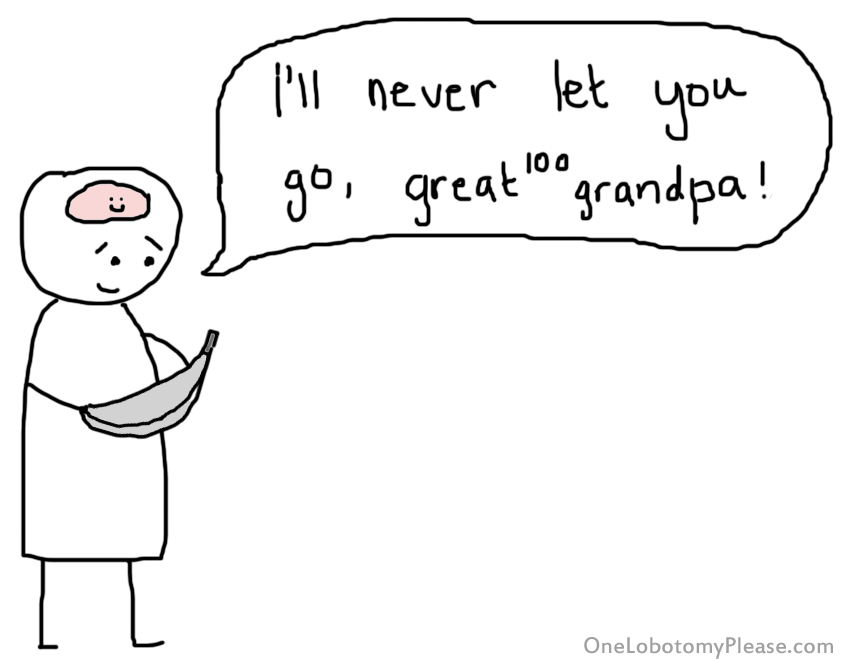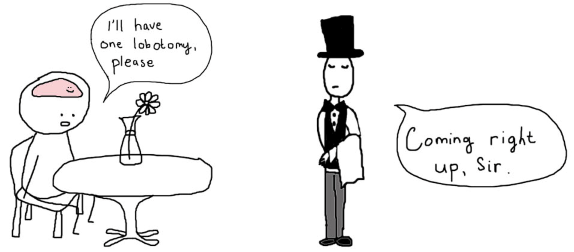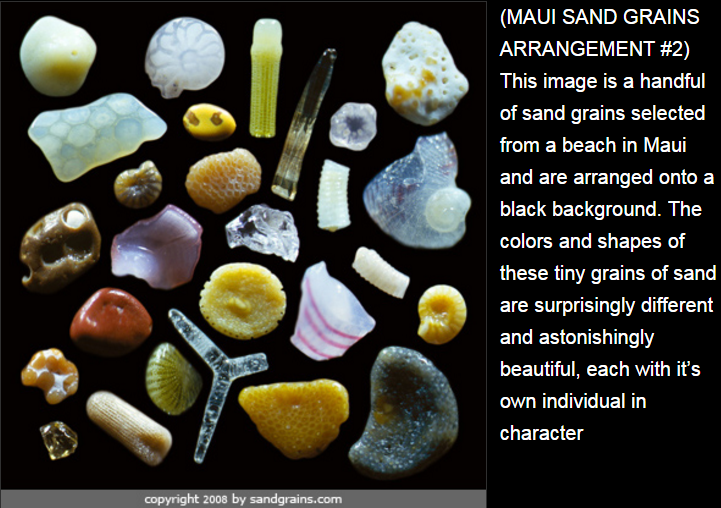We all come from the same source. The same starting point. Every stranger you’ve brushed shoulders with, every wild animal you’ve learned about, every blue pen you own, every grain of salt you’ve cautiously sprinkled unto your eggs and every molecule of air you’ve ever breathed. All of it. Every crisp apple you’ve bitten, regretful tear you’ve shed, floor tile you’ve stepped on… you get the point.
Literally. Every. Single. One of these is traceable to one identifiable event a really long time ago.
Your journey to today went a little something like this:
Not-So-Humble Beginnings
It’s fairly common knowledge that we evolved from primates and monkey-like creatures, sure, but before that? I find it astounding that looking further back it’s apparent that our ancestors were at one point sponge-like, lizard-looking and squirrel-behaving. It turns out that our exceptionalism as human beings—that air of superiority that drives us to conquer, assimilate and dominate our environment that we perceive as ‘beneath’ us—is entirely unfounded, and frankly, disastrous. Because at some historic point, we were just as primordial, just as basic; we just happened to have the luck of developing conscience before anyone/thing else. Our environment is made from exactly the same building blocks as us and had to work just as hard as us to get here!
We all share the same great great100 grandparents. The illustrated comic above was more or less what the process looked like for a human being, but a similar comic could be made for any being, any thing, any place, any object, or even any banana. A banana, for example, shares 50% of our DNA, explainable by its shared origin as us from the big bang. It, too, had to traverse the same journey from the big bang to cosmic dust to single cell organism to multi cell organism to plantain to plantain mutation to present day deliciousness.
Even a measly grain of sand on the beach was once a conglomeration of cosmic mush that steadily formed something coherent, even picturesque. Take a look at this fascinating image of what a pinch of sand looks like, zoomed up 300 times under a microscope. Notice its insanely complex composition, reflecting an almost calculated placement of garish beads on an artistic canvas. Proof of our evolution is all around us—even in overlooked, miniscule places like grains of sand on a beach—and it’s breathtaking.
I want to reiterate this cardinal point: you have more in common with every other human being, animal, element, object and thing than you think. It may not seem like it, but we all come from the same ancient cosmic soup. Conceptually, I’ll admit this is hard to grasp, since a plastic bottle appears quite literally a world-away in composition compared to human beings. Yet when viewed from a molecular level, the evidence is unmistakeable. Knowledge of our shared constituents with literally every other known thing in this universe completely invalidates our tendency to separate ourselves from our environment and other beings. We were all birthed from the same cosmic womb, and it would probably serve us well to treat our cosmic brothers, sisters and cousins with a bit more respect.
Putting Time in Perspective
This all started billions of years ago. Billions. A billion is a ridiculously largely number, almost made up; billions of years are unimaginable, almost joke-like, stretches of time. We can hardly keep track of several hours of time, much less so a decade, a millennia, or especially an aeon of time. Try to imagine what a billion of something looks like. Now imagine what a billion years look like. You can’t. You literally can’t. You can’t because our brains were not built for processing such colossal numbers and measurements of time. Immediate survival and short-term planning were always the name of the game. Imagining a quantity of time beyond a lifespan is challenging, let alone what you’re having for lunch tomorrow.
I’m guilty of our brain’s biased inability to grasp large scales of time, and even after taking in the above illustration, I admit it’s still really hard to grasp the astonishing span of it all.
Fortunately, humanity was blessed with a visionary by the name of Carl Sagan, who, among his many timeless contributions to popularizing science, introduced a very intuitive approach to properly grasping how little time humanity has occupied since the very beginning of the very conception of time. His attempt to contextualize how much time we’ve occupied in the universe since its inception was beautifully presented in the original Cosmos TV show, in the form of The Cosmic Calendar. His presentation of the calendar offers a very digestible method to swallow the relativity of how little time we’ve been around.
To summarize a key point in the video, if we transpose the age of the universe, 14 billion years, into one calendar year, each calendar month would represent 1.2 billion years, each calendar day would represent 40 million years, each calendar second 500 years. Using Sagan’s approach, it turns out that human beings have only been around for the last hour and a half on December 31st. Many iconic thinkers like Shakespeare, the abolishment of slavery, all of modern science and technology, both world wars, the internet…. These all occurred in the last second of the last hour on the last day of the cosmic calendar. What’s the takeaway from all this?
Cosmic Insignificance
Cosmic insignificance. Pure, utter, complete and unmistakeable insignificance of the human race within the vastness of cosmic history. Us humans have been around for a measly hour and a half using Sagan’s methodology, and the average human life—your life—takes up milliseconds on the cosmic calendar. Meaning one blink of an eye comprises an entire generation of humanity. You and all your loved ones’ lives constitute an inexpressibly infinitesimal slither of time since the big bang.
So insignificance, huh? What’s there to gain from knowing about how small we are? Is cosmic insignificance a personal burden to be shouldered for your whole life or a liberating feature of the universe to always keep nestled in the back of your mind? The latter, fortunately, as there are profound positive implications to cosmic insignificance for the average human being and our society. But I’ll cut it short here, since diving into these implications is an entire beast of its own; I’ll explore these areas fully in my next post.
I’ll leave you here for now, pondering your littleness, for the next little bit until my next article. I’ll indulge you with an additional bonus video, also narrated by Sagan, which I consider to be mandatory viewing for every human being. Personally, this video serves me sort of like an annual ‘doctor check-up’ that I regularly receive (If I remember, I try and view it every several months). The video is an important reality check about the relativity of our planet within the greater universe, delivered powerfully and concisely. It helps me reframe my earthly worries and ambitions in a healthier, macroscopic light. More than anything else, it drives home my cosmic insignificance on this ‘pale blue dot.’
“We are just an advanced breed of monkeys on a minor planet of a very average star. But we can understand the Universe. That makes us something very special.”
― Stephen Hawking



